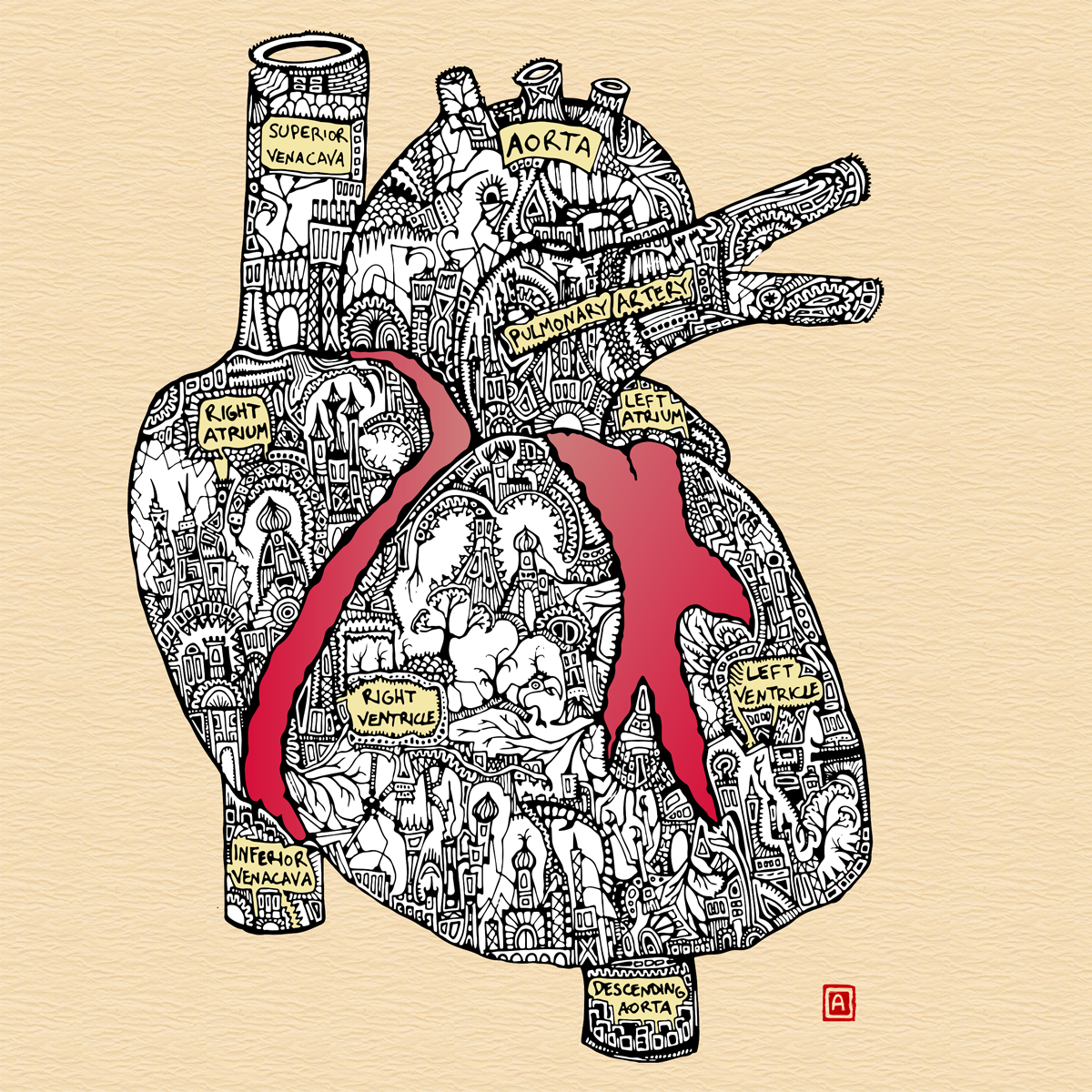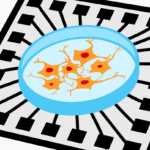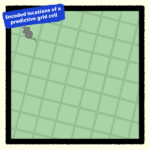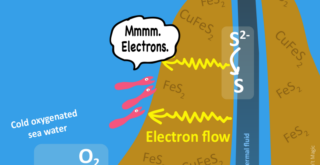In the 60s, Roger Sperry developed a procedure for alleviating the spread of epileptic seizures that involved cutting most of the fibers (axons) that connect the two cerebral hemispheres. In doing so, he created “split-brain” patients, who he went on to study in great detail. In 1981, he was awarded the Nobel Prize in Physiology or Medicine in 1981 “for his discoveries concerning the functional specialization of the cerebral hemispheres.” Since that time, people have been confusing this real science about information processing with the pseudoscience of personality. An example comes from a study in 1986 that investigated memory of hierarchical visual shapes (I actually remembered this figure from my undergraduate days and was able to find it and the source — long live the interwebs!)

From: Delis DC, Robertson LC, Efron R (1986) Hemispheric specialization of memory for visual hierarchical stimuli. Neuropsychologia. 24(2):205-14.
The researchers showed patients large shapes (like an “M” or a triangle) that were composed from smaller shapes (“Z”s and squares) (Fig 1, left panels). Afterward, they asked the patients to draw the shapes from memory. People with left-sided brain injuries simply drew the larger overall shape (Fig 1, right panels), while people with right-sided damage drew the smaller components without the same larger organization (Fig 1, middle panels). The idea here is that when processing these types of images, the left hemisphere of the brain seems to be important for the smaller details, while the right side is needed to catch the global shape.
This was good science. But then came the pseudoscience that conveniently forgot that if your brain is not injured, you can see the global and local shapes without any bias. And of course information processing has nothing to do with personality! The results from these types of experiments have been unfairly used to say that if you are a right-brained person you will be more artistic, while if you are left-brained you will be more scientific and analytical.
But there is no scientific evidence that people are left- or right-brained in the sense that left or right hemisphere activity dominates in different people. All the evidence shows that both sides of the brain are active the same amount and work together. This iteration of personality pseudoscience is just as bad as the long debunked phrenologists who thought personalities could be determined by the shape and [itg-tooltip tooltip-content=”<p><img src=&aquot;https://s-media-cache-ak0.pinimg.com/564x/ac/f0/55/acf0553c5697bae005b4ce94726f4686.jpg&aquot; /></p>”]bumps on a person’s skull[/itg-tooltip].
Even more detrimental, this idea seems to say that scientific and artistic thinking are mutually exclusive. The implication is that you have to choose one or the other because no one could be successful at both. In fact, science and art are always intertwined, and the most successful people incorporate both in their work.
So, at It Ain’t Magic, we want to do our part in reminding the world that science and art are not mutually exclusive. We invite artists, scientists, artistic scientists, and scientific artists, to submit images of science-inspired art. Please send your images to it-aint-magic@RIKEN.jp with (1) the subject heading: science-inspired art submission, (2) your name, (3) a title, (4) and a caption that explains the science that inspired you. The topic might turn into a blog post with your artwork as the featured image (properly credited of course!)
I’ve started things off with my own amateur science-inspired art to give you an idea, but really, anything is ok. If my lame heart art leaves you skeptical that scientists can be amazing artists, check out the work by Greg Dunn. I met Greg at the annual Society for Neuroscience meeting many years ago where he had a booth (I’m sure he doesn’t remember me). He’s just one example, and I’m hoping that others are reading this right now.
Anyway, physics, sketches, paintings, biology, chemistry, cartoons, sculptures, engineering, astronomy, photos from microscopes (everyone likes fluorescent colors), whatever. If a scientific finding inspired your work (preferably from a paper in 2016) and you can get it into digital image form, we will eventually post it to the blog with all the information and allow users to vote for their favorite images (multiple submissions = ok!). Special bonus points if you are inspired by science done at RIKEN (not really, but it will be appreciated ?).
In the 60s, Roger Sperry developed a procedure for alleviating the spread of epileptic seizures that involved cutting most of the fibers (axons) that connect the two cerebral hemispheres. In doing so, he created “split-brain” patients, who he went on to study in great detail. In 1981, he was awarded the Nobel Prize in Physiology or Medicine in 1981 “for his discoveries concerning the functional specialization of the cerebral hemispheres.” Since that time, people have been confusing this real science about information processing with the pseudoscience of personality. An example comes from a study in 1986 that investigated memory of hierarchical visual shapes (I actually remembered this figure from my undergraduate days and was able to find it and the source — long live the interwebs!)

From: Delis DC, Robertson LC, Efron R (1986) Hemispheric specialization of memory for visual hierarchical stimuli. Neuropsychologia. 24(2):205-14.
The researchers showed patients large shapes (like an “M” or a triangle) that were composed from smaller shapes (“Z”s and squares) (Fig 1, left panels). Afterward, they asked the patients to draw the shapes from memory. People with left-sided brain injuries simply drew the larger overall shape (Fig 1, right panels), while people with right-sided damage drew the smaller components without the same larger organization (Fig 1, middle panels). The idea here is that when processing these types of images, the left hemisphere of the brain seems to be important for the smaller details, while the right side is needed to catch the global shape.
This was good science. But then came the pseudoscience that conveniently forgot that if your brain is not injured, you can see the global and local shapes without any bias. And of course information processing has nothing to do with personality! The results from these types of experiments have been unfairly used to say that if you are a right-brained person you will be more artistic, while if you are left-brained you will be more scientific and analytical.
But there is no scientific evidence that people are left- or right-brained in the sense that left or right hemisphere activity dominates in different people. All the evidence shows that both sides of the brain are active the same amount and work together. This iteration of personality pseudoscience is just as bad as the long debunked phrenologists who thought personalities could be determined by the shape and [itg-tooltip tooltip-content=”<p><img src=&aquot;https://s-media-cache-ak0.pinimg.com/564x/ac/f0/55/acf0553c5697bae005b4ce94726f4686.jpg&aquot; /></p>”]bumps on a person’s skull[/itg-tooltip].
Even more detrimental, this idea seems to say that scientific and artistic thinking are mutually exclusive. The implication is that you have to choose one or the other because no one could be successful at both. In fact, science and art are always intertwined, and the most successful people incorporate both in their work.
So, at It Ain’t Magic, we want to do our part in reminding the world that science and art are not mutually exclusive. We invite artists, scientists, artistic scientists, and scientific artists, to submit images of science-inspired art. Please send your images to it-aint-magic@riken.jp with (1) the subject heading: science-inspired art submission, (2) your name, (3) a title, (4) and a caption that explains the science that inspired you. The topic might turn into a blog post with your artwork as the featured image (properly credited of course!)
I’ve started things off with my own amateur science-inspired art to give you an idea, but really, anything is ok. If my lame heart art leaves you skeptical that scientists can be amazing artists, check out the work by Greg Dunn. I met Greg at the annual Society for Neuroscience meeting many years ago where he had a booth (I’m sure he doesn’t remember me). He’s just one example, and I’m hoping that others are reading this right now.
Anyway, physics, sketches, paintings, biology, chemistry, cartoons, sculptures, engineering, astronomy, photos from microscopes (everyone likes fluorescent colors), whatever. If a scientific finding (preferably from a paper in 2016) inspired your work and you can get it into digital image form, we will eventually post it to the blog with all the information and allow users to vote for their favorite images (multiple submissions = ok!). Special bonus points if you are inspired by science done at RIKEN (not really, but it will be appreciated ?).
Topics: ・art・brain science・












